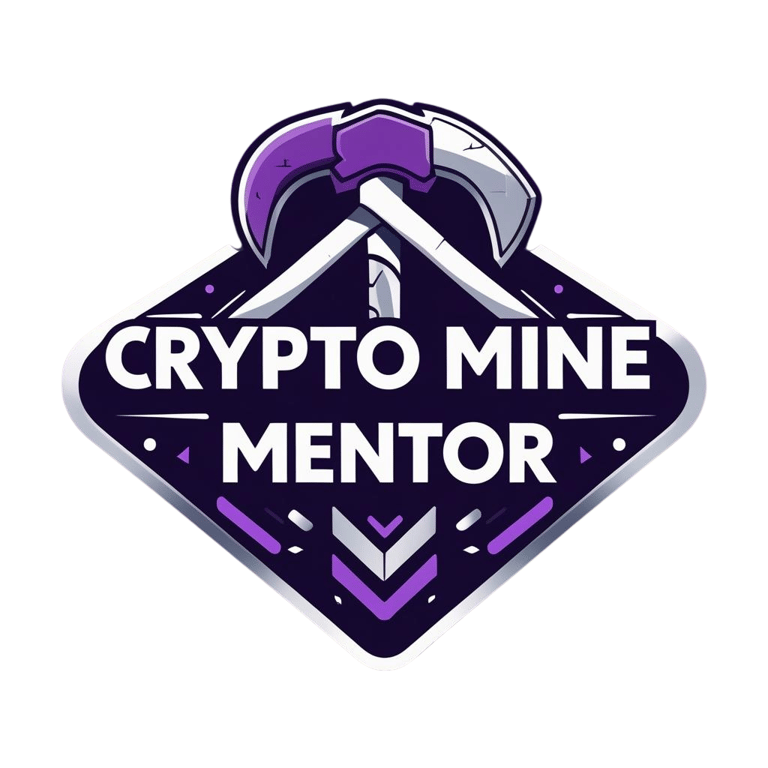Unlocking the Secrets of Cryptocurrency Mining and Trading for Beginners
Welcome to Crypto Mine Mentor, your ultimate resource for understanding cryptocurrency mining and trading. Our informative blog offers valuable insights, tips, and strategies to help you navigate the complex world of cryptocurrencies. Join us as we explore the latest trends and techniques to enhance your crypto journey.
5/8/20243 min read


Unlocking the Secrets of Cryptocurrency Mining and Trading for Beginners
Introduction
Cryptocurrency offers two exciting ways to get involved: mining (creating new tokens) and trading (buying and selling them). For beginners, understanding each path can help you choose which suits your goals, financial resources, and risk appetite.
Part I: Cryptocurrency Mining – How It Works
1. What is crypto mining?
Mining is a Proof-of-Work (PoW) process where powerful computers solve complex puzzles to validate transactions and maintain blockchain integrity. Successful miners are rewarded with freshly created coins (e.g., Bitcoin) plus transaction fees.
2. Mining hardware evolution:
Initially, CPUs were used. GPUs followed due to better parallel processing. Today, most mining is done with high-end ASIC devices like the Bitmain Antminer S21 Pro (~234 TH/s, ~3,510 W) or MicroBT Whatsminer M66S (~298 TH/s).
3. Mining methods:
Solo mining: Difficulty and competition make solo mining practically impossible for individuals without massive scale.
Pool mining: Most beginners join mining pools to combine computing power and earn steady, smaller rewards .
Cloud mining: Rent hash power from providers, eliminating hardware management—but beware of scams and fees.
4. Costs and profitability:
Mining is capital intensive. ASIC rigs cost between $2,000–20,000+, operational costs (especially electricity) are high, and bitcoin difficulty adjusts upward as more miners join. As of June 2025, the block reward is 3.125 BTC (roughly $334,000 at the time). However, average mining cost versus price in mid‑July 2025 indicates costs consume ~80% of revenue.
5. Environmental & legal concerns:
Crypto mining consumes enormous energy—up to 2% of U.S. electricity in recent estimates—raising carbon footprint concerns.
Legality varies globally, with some governments banning or heavily regulating mining.
Tools & setup essentials:
ASIC or GPU hardware,
mining software (CGMiner, BFGMiner, EasyMiner),
reliable internet, ventilation and cooling,
a secure digital wallet (e.g. Electrum, hardware wallet) for mining rewards
Part II: Cryptocurrency Trading – Getting Started
1. What is crypto trading?
Trading involves buying and selling existing cryptocurrencies like Bitcoin, Ethereum, or altcoins—rather than mining new ones.
2. Choose a reputable exchange:
Begin with platforms like Coinbase, Binance, Kraken, etc. Set up your account, complete KYC, fund it, and enable 2‑factor authentication for security.
3. Storage options:
Keep your crypto in a non‑custodial or hardware wallet if you're holding long term. Hot wallets (online) are convenient for trading; hardware wallets provide better security.
4. Beginner strategies:
Dollar-cost averaging (DCA): Invest small, consistent amounts in major coins (e.g., BTC, ETH) to minimize timing risk.
Start small: Learn with minimal capital—experts suggest only allocating up to 5% of your overall portfolio to crypto initially.
Technical analysis basics: Learn candlestick patterns, trend lines, MACD, and always use stop-losses to protect capital.
Education matters: Online courses like Rekt Capital’s Technical Analysis can speed up learning for new traders.
5. Risks to be aware of:
Volatility & scams: Crypto trading is highly volatile; altcoins carry major risk and many marketing tips are scams.
Wash trading: Some exchanges inflate volume via fake trades, making metrics unreliable.
Regulatory and tax risks: Crypto is often treated as property; trades and mined coins are taxable. Regulations evolve rapidly
Part III: Mining vs. Trading – Which Path Should You Choose?
Mining: High (hardware + power) - Financial, technical - Long-term (years) - Setup complexity, profitability limits
Trading: Low (exchange deposit) - Volatility & scams - Short to mid-term - Learning curve, emotional discipline
Trading offers flexibility and lower upfront costs—ideal for learning and experimentation.
Mining may be viable if you have capital, access to cheap electricity, or plan to host rigs.
Conclusion & Final Tips
Start with knowledge: Understand basic blockchain mechanics, PoW vs. PoS, hardware, software, and terminology. Coursera, CoinLedger, and reputable blogs are solid starting points
Security is vital: Always use strong passwords, enable 2FA, secure private keys, and store funds in hardware wallets.
Stay updated: Crypto markets and regulations shift quickly—follow credible news sources and official platforms.
Monitor costs: Always calculate electricity, hardware, and pool fees for mining; in trading, account for exchange fees and tax obligations.
Experiment responsibly: You can test strategies with minimal capital. Use demo accounts or small trades to build confidence.
Whether you're intrigued by the challenge of mining or the strategic excitement of trading—or both—this guide arms you with the foundational knowledge to begin. Keep learning, stay cautious, and never invest more than you can afford to lose.
Disclaimer: This blog is for educational purposes and not financial advice. Always do your own research.

Subscribe Now
Enjoy exclusive special deals available only to our subscribers.
